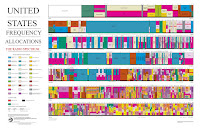In a March 31 report, Ligado Networks informed the FCC that it will begin wireless network operations in the 1526-1536 MHz band on or after September 30 of this year. This is exciting news, as Ligado intends to provide "reliable and secure next-generation network capabilities to our nation's critical infrastructure industries."
Back in April 2020, the FCC unanimously approved its L-Band Order, which authorized Ligado Networks to deploy a next-gen mixed mobile-satellite network using licensed spectrum in the lower mid-band range (1-2 GHz). This valuable spectrum has gone unused for years. But the Commission's order cleared the way for Ligado to provide industrial Internet-of-Things (IoT) services and private 5G network solutions for energy, utility, and other industries. The Commission recognized the potential for Ligado's network to benefit the public by spurring infrastructure investment, supporting advanced services, and creating jobs.
Since the Commission approved the L-Band Order, Ligado has pursued commercial partnerships to deploy its networks. In June 2021, it was reported that Ligado raised $4 billion in private capital to develop and deploy its network. Also in 2021, Ligado announced it had received 3GPP standards approval for its specifications to deploy 5G services in its L-Band spectrum. And Ligado reported reaching a deal with Nokia to develop 5G base stations.
Ligado Networks' March 31 announcement of plans to commence operations in the 1526-1536 MHz in northern Virginia is in keeping with the L-Band Order's requirement that Ligado provide 6-months advance notice to GPS providers in adjacent spectrum. The L-Band Order includes several safeguards against potential harmful signal interference to incumbent operations in neighboring spectrum bands. For instance, the order requires a 23 megahertz guard band between Ligado's downlink operations in the 1526-1536 band and GPS operations in the 1559-1610 MHz band. The Commission's also imposes strong limits Ligado's base station power levels.
In all, Ligado's expected start for operations this fall is a step forward for America's wireless future.




